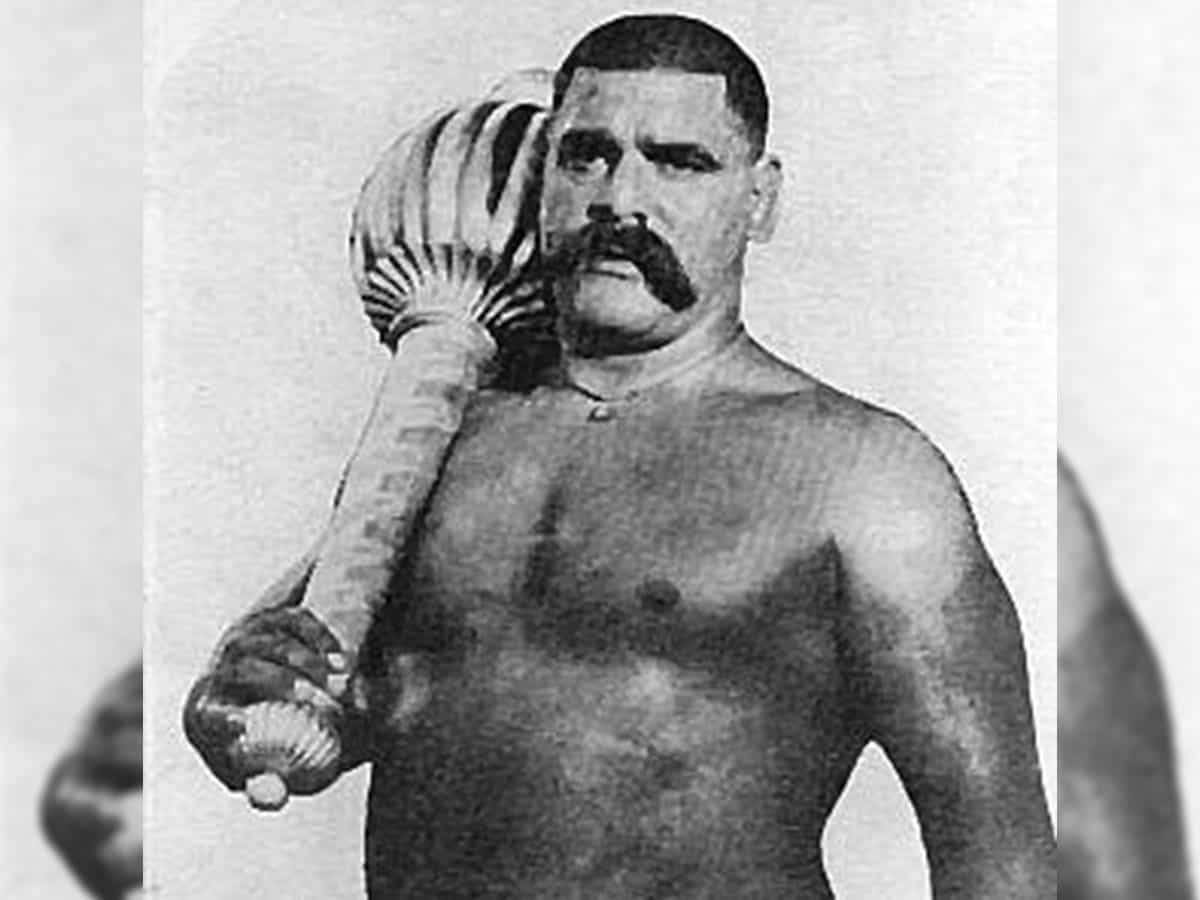
Wrestling has been one of the traditional sports in the Indian subcontinent for many centuries. Perhaps the most famous wrestler of yesteryears whose feats have been widely hailed was Ghulam Mohammad Baksh Butt who was better known by the more simple name of Gama Pahelwan or Great Gama. Besides many championships he also held the title of Rustam-e-Hind and Rustam-e-Zaman for several years. This fabled strongman from Punjab ruled the wrestling world like a colossus in the beginning of the 20th century.
He was born on 22nd May, 1878. However, according to some sports historians, the year could have been 1880. He was born in a village called Jabbowal in Amritsar district. Hailing from a family of wrestlers, he remained undefeated throughout his career thus making him one of the greatest wrestlers of all time.
In 1910 after defeating several of Europe and America’s top professional wrestlers he was given the John Bull Belt by which he was acknowledged as the world champion. Now the question arises – why did he not take part in the Olympic Games. The answer to that is simple. It is because Indian wrestlers almost always received money to take part in competitions. This made them ineligible to take part in the Olympics which was reserved only for amateurs.
Gama was inspired by another famous wrestler who achieved worldwide fame before him. That man was known simply by one name that was Ghulam (sometimes spelt Gulam). This wrestler Ghulam was taken by Pandit Motilal Nehru for bouts in Europe and it was the first time that Europeans saw an Indian wrestler in action on their soil. A Frenchman named Edmond Desbonnet who was a photographer and journalist and also an amateur strongman himself, wrote that the Indian wrestler Ghulam fought one bout against a famed wrestler named Cour-Derelli.
From the beginning of the bout, Ghulam showed his superiority in all departments. Within minutes Ghulam threw down his opponent with a “flying mare move”. The Frenchman described it as a “tour de bras” which translated into English means mighty effort. After a while Derelli realised that he could not expect to win and decided to adopt a defensive strategy. Eventually Ghulam was declared the winner. “To our minds, no current wrestler could stand five minutes against Ghulam,” wrote Desbonnet.
It was this Ghulam who was the inspiration for Gama when the latter began to come into the limelight. The Baksh family is believed by historians to originally have been Kashmiri Brahmins who converted to Islam. His father Mohammed Aziz Baksh was a top wrestler whose patron was the Raja of Datia, and he began training Gama from the age of five. But when the boy was eight years old, the father died and the training was then supervised by the boy’s uncle Idda Pahelwan.
The lad’s first brush with fame happened at the age of ten when he took part in a competition organised by the ruler of Jodhpur, Raja Jaswant Singh. It was not a wrestling competition but an exercising competition. The contestants, all of them wrestlers, would have to perform as many “baithaks” (squats) as they could. More than 400 wrestlers were there but little Gama outperformed them all.
When he became a fully grown adult wrestler, his food intake and exercising routine was prodigious. The English writer Percy Longhurst recalled seeing Gama when he was in England: “I shall not readily forget the day when I went over to Gama’s training quarters near Kingston to watch him training. The morning he spent in going through a few hundred repetitions of the ‘dand’ this was followed by several bouts with his fellow Indians, Imam Bux and another. A two-hour rest and a meal followed. The afternoon was given up to deep knee bends (baithaks). This could go on without any interruption for an hour or more.”
All the hard work paid off and Gama became an unbeatable wrestler. One of his first major wins came when he was only 17 years old. His opponent was the giant Rahim Baksh Sultaniwala. The latter was said to have been almost 7 feet tall and was older and more experienced than Gama. They had two bouts. One was a draw and the other ended in a victory for Gama.
Gama then went to Europe where he crushed several famed opponents including Frank Gotch of the USA and Stanislaus Zbyszko of Poland. Both of these grapplers were the strongest persons in the world at the time but Gama overcame them both. After returning to India, Gama once again defeated Rahim Baksh Sultaniwala and took the title of Rustam-e-Hind.
However, Gama’s later life was not a happy one. He suffered from ill health and financial hardship. To meet expenses he had to sell off a silver mace that had been presented to him by the Prince of Wales, Edward VII, in 1922. He was struck by further tragedy as his sons died before him. When India and Pakistan were partitioned, Gama opted to live in Pakistan and tried his hand at business. Later Gama was given land and a monthly pension by the government until his death. He died in Lahore on 23rd May 1960. Incidentally, the late Mrs. Kulsum Nawaz, wife of former Pakistan Prime Minister Muhammad Nawaz Sharif, was the granddaughter of the Great Gama.

